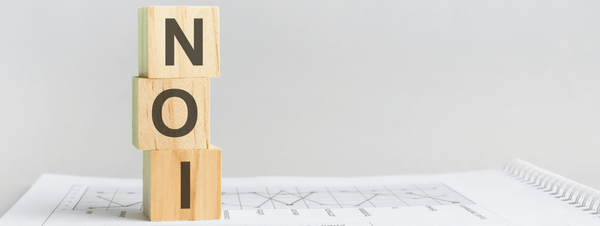Buy-to-let Capital Gains Tax explained
As a buy-to-let landlord, you have two main methods of turning a profit from your investment: taking an income in rent, and making a profit when you sell a property that has increased in value.
When you sell a rental property, you’re usually liable for Capital Gains Tax (CGT). However, there are certain allowable deductions you can make when calculating your capital gains, and you may also be eligible for certain forms of tax relief that could reduce your bill.
Tax rules have changed significantly, which can make it hard to stay on top of — and you could be liable for a penalty from HMRC if you fail to properly declare your capital gains.
In this article, we’ll take you through the ins and outs of Capital Gains Tax that you need to understand as a property investor, as well as the deductions you can make and the tax relief you might be entitled to.
What is Capital Gains Tax?
Capital Gains Tax is paid on gains (profit) made from selling a capital asset at a higher price than you bought them for. For landlords, this usually means profit made on selling property that has risen in value since you bought it.
How much do landlords pay?
Capital Gains Tax on property is paid at a different rate to other assets. The amount you’ll pay as a landlord depends on:
- How much profit you made on the sale
- The tax bracket you fall into
- The costs you can deduct and any tax relief you’re eligible for.
The current Capital Gains tax rates are:
- 18% for basic-rate taxpayers
- 28% for higher or additional rate taxpayers
The current Capital Gains tax-free allowance is £12,300, which means you won’t pay taxes on the first £12,300 of the profit you made. If you own a property as a married couple, you can combine your allowances for a total tax-free allowance of £24,600.
However, in order to figure out which of the three tax brackets you fall into, you need to add together your capital gains (minus the Capital Gains tax-free allowance) and your taxable income — which means that your gains from selling a property could push you into the higher bracket if you pay tax at the basic rate.
Example
Let’s say you bought a house for £110,000 and sold it for £150,000 today. This would mean you’ve made £40,000 in profit (gains).
If we deduct the Capital Gains tax-free allowance of £12,300, we’re left with £27,000 on which CGT will be due. This means you would pay £4,986 in Capital Gains Tax (18) if you’re a basic-rate taxpayer.
If your personal income came to £30,000 after deducting your personal allowance, you would pay 18% CGT on the first £20,270, which takes you up to the higher tax threshold of £50,270. You would also pay 28% on the remaining £5,729, giving you a total Capital Gains Tax bill of £5,729 (£3,648.60 + £2,080.40).
Deductions and relief
Selling a property as a buy-to-let landlord can leave you with a sizeable bill for tax on capital gains. However, there are certain things you can do to reduce the cost.
Tax deductions
You’re entitled to deduct certain costs from your capital gains when you sell a property. Specifically, the following are usually deductible:
- Stamp Duty Land Tax and conveyancing costs incurred when you bought the property
- Costs associated with selling the property, such as solicitors’ and estate agents’ fees
- The cost of capital improvements you’ve made to the property, such as adding an extension that increased the property’s value
It’s important to note that you can’t deduct any costs related to the general upkeep of the property or interest on mortgage payments.
Private Residence Relief
If you lived in the property as your main home for part of the time you owned it, you can get tax relief for this period under Private Residence Relief (PRR).
For example, if you owned a house for ten years and lived in it for the first four years before letting it out or using it as a second, home, you would be entitled to tax relief for the time the property was your main residence. Since you lived in the house for 48 out of the total 120 months you owned it, you would be eligible for tax relief worth 40% of the CGT due.
You also get tax relief for the last nine months you owned the property if it was once your main residence, no matter how it was used during this period. So, in this case, you would get tax relief worth 47.5% of the Capital Gains Tax owed.
Letting Relief
Until recently, Letting Relief allowed many landlords to reduce their CGT bill on properties they had previously lived in. However, since April 2020, this only applies to landlords who let out part of their house while still living in it alongside their tenants.
If you rented part of your house out to tenants while living in it, you can claim Letting Relief on the part of the property that was let to tenants. For example, if you rented out a large bedroom that made up 10% of the property, you would be eligible for Letting Relief on that part of the house.
However, in practice, most landlords that this would apply to would otherwise be entitled to PRR — and it isn’t particularly relevant to most buy-to-let landlords.
Offsetting losses
If you sell multiple properties in the same tax year, you can offset any losses against the capital gains made on another property. For example, if sold one property at a loss of £5,000 on the sale of one property and a profit of £50,000 on another once your allowable expenses were deducted, you would only be liable for CGT on £45,000 (minus the tax-free allowance of £12,300).
You can declare a loss up to four years after the end of the tax year in which it was incurred — and you can carry forward an ‘unused’ capital loss to a future tax year.
Declaring the property as your primary residence
Since you generally don’t pay Capital Gains Tax when you sell your main residence, it’s natural to wonder whether you can avoid it altogether by simply declaring the property as your primary home before you sell it.
While this is technically possible, it’s important to tread carefully, as there are strict rules on what can be classed as your main residence — though it doesn’t have to be the home you spend the most time in.
There is no limit on the number of times you can change your stated main residence, but you have to do it within two years of your combination of homes changing (for example, by buying a new property that you intend to use as your primary residence). It’s a good idea to speak to a tax accountant or financial planner to help you decide if this is a good idea.
However, the property must genuinely be your main residence, and HMRC can ask for evidence such as bills and bank statements and proof that your name is on the electoral register at that address. Married couples and those in civil partnerships can only declare one main home between them.
The rules on declaring and paying Capital Gains Tax
The rules on when you have to declare and pay your CGT have gone through several rounds of changes recently. It’s important to stay up-to-date so that you don’t incur penalties for missing a deadline.
For any gains made on or after 27 October 2021, you have to declare your capital gains and pay your CGT within 60 days of selling the property.
For any gains made between 6 April 2020 and 26 October 2021, you must declare your gains and pay your CGT within 30 days of the sale. At the time of writing, this means you should already have paid your CGT. It’s important to contact HMRC as soon as possible if you think you owe tax that you haven’t yet paid or declared.
If you sold the property before 6 April 2020, you have two options: you can either report and pay the CGT straight away, or include it in your next tax return.
Potential forthcoming changes to Capital Gains Tax
In the past year, the Office of Tax Simplification (OTS) has published several reports commissioned by chancellor Rishi Sunak, which suggest certain changes to the way Capital Gains Tax is collected. While it’s not confirmed, there are several changes to CGT that may come into force in the next few years.
First, the OTS report suggests raising CGT for property to be in line with Income Tax rates. If this were the case, CGT would be taxed at the following rates:
- 20% at the basic rate
- 40% at the higher rate
- 45 % at the additional rate
There is also a proposed change to the Capital Gains tax-free allowance, which would see it lowered to around £2,000 or £3,000 — representing a significant increase in the tax burden of selling a property for BTL landlords. .
HMCR rarely announces changes to tax rates and rules with any great fanfare, so it can be easy to miss them. But the rules for paying and reporting your tax as a landlord, including those relating to Capital Gains Tax, are subject to frequent changes, and you could be liable for interest and a penalty if you fail to properly report your gains. It’s important to stay abreast of any changes to make sure you’re not faced with a bigger bill than expected when you sell your property.
Article by Annie Caley-Renn
At Home Made, we offer a hybrid lettings solution that adds value at every stage of the rental process. With our game-changing new landlord platform, The Property Wallet, we offer London landlords exceptional tenant-find and property management services for a low monthly fee.
- Avoid expensive upfront fees and spread the cost of marketing your property with the option to pay monthly.
- Free rent collection and arrears chasing.
- Sign off and see all charges and payments in your dashboard.
- Real-time updates on marketing, viewings, and offers.
Prices start from just £50+VAT/mo for tenant-find and £60+VAT/mo for management. Alternatively, you can pay a one-off upfront fee of £1,200+VAT for our tenant-find service.
If you would like to speak with us about your property needs, contact us via our website to find out how we can help. If you're ready to get started, book your free valuation here.
Book valuationCheck out more of our landlord advice here and follow us on Twitter, Linkedin, and Instagram for regular updates on industry compliance standards, market insights, and Home Made company news.




